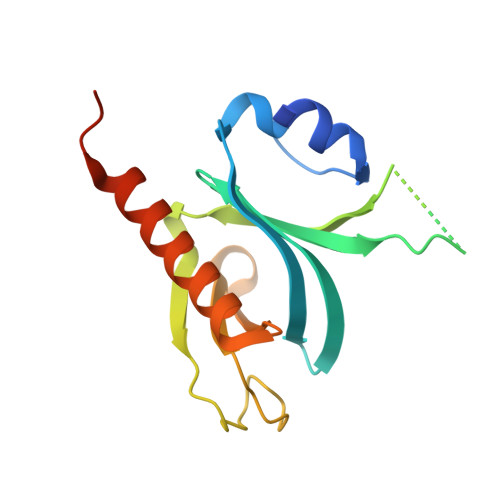Structural and Biochemical Characterization of the Catalytic Core of the Metastatic Factor P-Rex1 and Its Regulation by PtdIns(3,4,5)P3.
Cash, J.N., Davis, E.M., Tesmer, J.J.(2016) Structure 24: 730-740
- PubMed: 27150042
- DOI: https://doi.org/10.1016/j.str.2016.02.022
- Primary Citation of Related Structures:
5D27, 5D3V, 5D3W, 5D3X, 5D3Y, 5FI0, 5FI1 - PubMed Abstract:
Phosphatidylinositol 3,4,5-trisphosphate (PIP3)-dependent Rac exchanger 1 (P-Rex1) is a Rho guanine nucleotide exchange factor synergistically activated by PIP3 and G¦Â¦Ă that plays an important?role in the metastasis of breast, prostate, and skin?cancer, making it an attractive therapeutic target. However, the molecular mechanisms behind P-Rex1 regulation are poorly understood. We determined structures of the P-Rex1 pleckstrin homology (PH) domain bound to the headgroup of PIP3 and resolved that PIP3 binding to the PH domain is required for P-Rex1 activity in cells but not for membrane localization, which points to an allosteric activation mechanism by PIP3. We also determined structures of the P-Rex1 tandem Dbl homology/PH domains in complexes with two of its substrate GTPases, Rac1 and Cdc42. Collectively, this study provides important molecular insights into P-Rex1 regulation and tools for targeting the PIP3-binding pocket of P-Rex1 with a new generation of cancer chemotherapeutic agents.
Organizational Affiliation:
Departments of Pharmacology and Biological Chemistry, Life Sciences Institute, University of Michigan, Ann Arbor, MI 48109-2216, USA.















